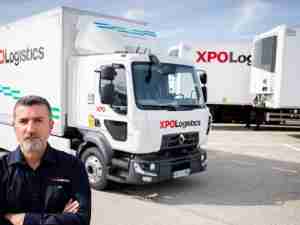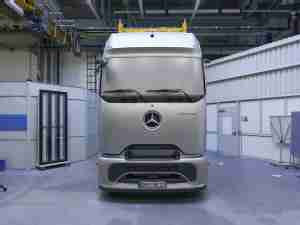An unloaded container chassis is up to ten metres long and weighs up to 5,500 kilos. And yet despite their size, these chassis still frequently disappear without a trace. The Hamburg-based chassis leasing company UES is now using the ‘Internet of Transport’ to track them down and to assist hirers and drivers more effectively in the event of a breakdown – made possible by an affordable tracking system from BPW Innovation Lab.

Mobile phone, glasses, keys to the flat – people often misplace, lose or leave behind everyday things. But commercial vehicles weighing several tonnes? This is part of everyday life for Matthias Emme, managing director of UES Chassis, one of the leading container chassis leasing companies. With over 700 vehicles in all sizes and tonnages, UES covers the entire range of container transport, from heavy-load to refrigerated transport. This is a fast-growing market because an increasing number of hauliers are opting to rely on a mix of their own, leased and hired chassis in order to react flexibly to fluctuating workloads – while keeping operating expenses predictable.
But as Matthias Emme explains, service is a critical success factor for UES Chassis: with a comprehensive service network, replacement vehicles and individual support packages, UES ensures that the containers can get back on the road more quickly if worst comes to worst. Flat tyres are quite common, for example, occurring on average 1.3 times a week. Finding the vehicle to provide service has proven to be particularly time-consuming, as the general lack of drivers has forced hauliers to hire an increasing number of employees with little or no knowledge of the German language – which often proves to be a real problem in the event of a breakdown. UES Chassis now has the ability to immediately locate the vehicle and guide the service vehicle to the site without detours or communication problems. This is made possible by the ‘Internet of Transport’ and the ‘CargoTracer’ from BPW Innovation Lab: an inconspicuous tracker the size of a smartphone is mounted to the chassis and transmits its location data via an innovative, worldwide ultra-narrowband network developed by IoT supplier Sigfox. Because it consumes very little power, it is simply screwed to the chassis without any wiring – that’s it. The battery lasts up to five years.
This enables the UES service team to determine the location of the vehicle at the customer’s request, which is also helpful when the chassis ‘disappear’. This is because drivers, often under time pressure and stress, park their vehicles outside the agreed parking spaces at depots or freight centres. Here, they are then often literally ‘misplaced’: the driver, who is already on a new route, can no longer remember exactly where he parked the vehicle. In the worst-case scenario, another driver mistakes them for their own and attaches them to the wrong towing vehicle – or they are simply stolen. A logistical nightmare for UES Chassis. The hirer is obliged to report the loss of the vehicle to the police and authorise them to begin a search. Now all it takes is one call to the UES service team, which can immediately locate the chassis with the click of a mouse.
The CargoTracer is so affordable that it not only enables asset tracking – the tracking of high-value assets – but can also be used to locate goods carriers and the freight itself and integrate the information directly into ERP and merchandise management systems such as SAP, if required. The Sigfox IoT network, which is currently being expanded worldwide, also makes sense for UES, because most hirers travel throughout Europe with their vehicles – usually between the major northern European ports.
Matthias Emme, who contributed to the development of the CargoTracer as a pilot customer, believes the trend is clearly moving towards connectivity: ‘The smarter the vehicles become, the more efficiently we can reduce the workload for drivers and dispatchers. This is why we expect to see a growing number of sensors being installed in trailers and chassis, which will also make predictive maintenance possible.’ For this reason, Matthias Emme will continue to contribute ideas from the field to support the BPW Innovation Lab in its development of new solutions.
One example of predictive maintenance is BPW’s new ‘BrakePad Monitor’, a retrofittable sensor that, for the first time, gradually displays brake pad wear in ten per cent increments. This makes it possible to accurately schedule the service appointment in advance – for Matthias Emme, another interesting step on the path to a smart trailer.
The BPW Innovation Lab offers the CargoTracer via a dedicated online portal – the devices can be ordered here: www.cargotracer.de The BPW subsidiary idem telematics offers the device for hauliers under the name ‘TC Track & Trace’ as a low-cost introduction to the world of telematics, but still fully integrated into the company’s telematics portal.










